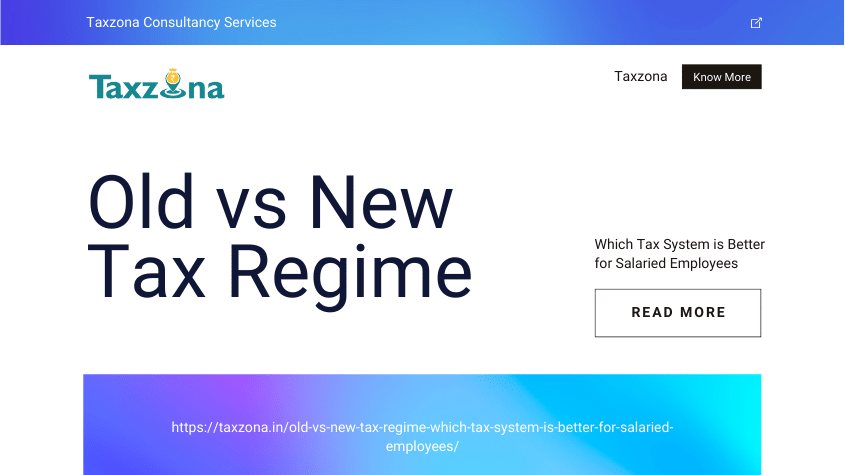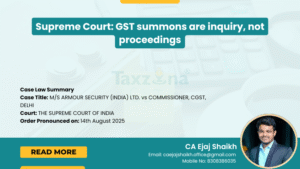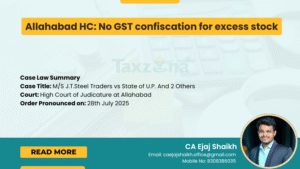The 2023 Budget has confused taxpayers about choosing between old and new tax regirme tax rules. The government of India has added incentives to promote the new system, aiming to phase out the old one. Even though the new system is default now, the old one still exists.
Let’s compare both for the best choice in 2023.
New Tax Regime
In Budget 2020, a new tax system changed tax slabs and offered lower rates. But it didn’t attract many due to limited exemptions like HRA, LTA, 80C, 80D, etc.
In Budget 2023, the government made 5 changes to encourage people to choose this system:
Higher Tax Rebate Limit: Under the new tax system, people earning up to ₹7 lakhs won’t pay any tax, increased from ₹5 lakhs in the old system. It’s a full rebate!
Streamlined Tax Slabs: The exemption limit is now ₹3 lakhs, and here are the new tax slabs:
Total Income | Rate of Tax |
up to ₹3,00,000 | Nil |
₹3,00,001- ₹6,00,000 | 5% |
₹6,00,001- ₹9,00,000 | 10% |
₹9,00,001- ₹12,00,000 | 15% |
₹12,00,001- ₹15,00,000 | 20% |
₹15,00,001 and above | 30% |
Here’s how the tax rates compare in both systems:
Income Slab | Old Tax Regime | New tax Regime (until 31st March 2023) | New Tax Regime (From 1st April 2023) |
₹0 – ₹2,50,000 | – | – | – |
₹2,50,000 – ₹3,00,000 | 5% | 5% | – |
₹3,00,000 – ₹5,00,000 | 5% | 5% | 5% |
₹5,00,000 – ₹6,00,000 | 20% | 10% | 5% |
₹6,00,000 – ₹7,50,000 | 20% | 10% | 10% |
₹7,50,000 – ₹9,00,000 | 20% | 15% | 10% |
₹9,00,000 – ₹10,00,000 | 20% | 15% | 15% |
₹10,00,000 – ₹12,00,000 | 30% | 20% | 15% |
₹12,00,000 – ₹12,50,000 | 30% | 20% | 20% |
₹12,50,000 – ₹15,00,000 | 30% | 25% | 20% |
>₹15,00,000 | 30% | 30% | 30% |
Here’s how the tax rates compare in both systems:
Deductions for Standard and Family Pension:
Salary income: The ₹50,000 standard deduction, previously in the old system, now applies in the new one too. With the rebate, your tax-free income is ₹7.5 lakhs under the new system.
Family pension: Family pension recipients can deduct either ₹15,000 or 1/3rd of their pension, whichever is less.
High net worth individuals now face a reduced surcharge: For income over ₹5 crores, the rate dropped from 37% to 25%, lowering their effective tax rate from 42.74% to 39%.
Higher Leave Encashment Exemption: Non-government employees now enjoy a higher leave encashment exemption, increased from ₹3 lakhs to ₹25 lakhs, an eight-fold rise.
From FY 2023-24, the new tax system becomes the default choice: To stick with the old system, file a form during return filing. You can switch between them each year.
Old Tax Regime
The old system existed before the new one. It offers 70+ deductions like HRA and LTA, cutting taxable income. Section 80C is popular, allowing up to Rs. 1.5 lakh reduction. Taxpayers choose between old and new systems.
What’s Better: Old or New Tax System Differences?
To decide between old and new tax systems, consider your eligible deductions and exemptions in the old system. We’ve calculated a breakeven point (see the table below) for salaried individuals under 60. Use it to choose the right regime.
Threshold to Decide Between New and Old Tax Systems
The breakeven point is where tax liability is the same in both systems. Stay in the old system if your deductions exceed this point.
Move to the new system if the breakeven point is higher for you.
If you have salary income:
If you have income other than salary
Tax under Old vs New regime
Consider these calculations to choose between old and new tax systems:
- If deductions are ₹1.5 lakhs or less: New regime is better.
- If deductions exceed ₹3.75 lakhs: Old regime is better.
- If deductions are between ₹1.5 lakhs to ₹3.75 lakhs: Depends on your income level.
What’s the Right Choice: Old or New Tax System?
When choosing between the two tax systems, consider exemptions and deductions in the old system.
After deducting them, calculate net taxable income. Compare tax liability in the old system with the new one. Opt for the system with lower taxes and inform the employer for correct TDS.
Conclusion
Many people wonder about the differences between the old and new tax systems. The new system suits those who want minimal deductions and less tax hassle, like consultants without certain exemptions. It also benefits older individuals without pensions. But seniors with substantial interest income might prefer the old system due to a special deduction.
Both systems have pros and cons. The old system promotes saving, while the new one is simpler but offers fewer deductions. It’s safer against fraud but needs a careful comparison based on individual circumstances.






